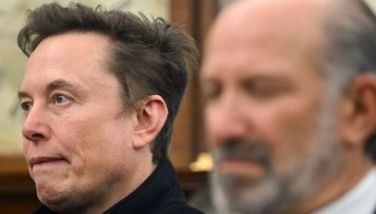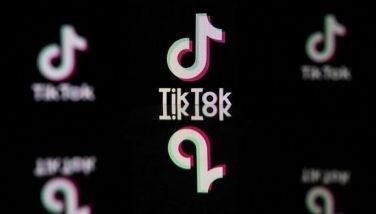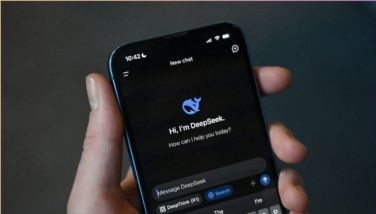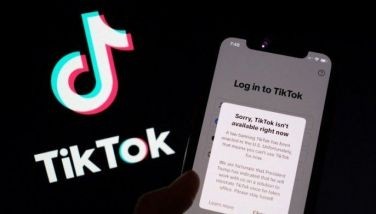Near-future tense from Intel’s futurist
MANILA, Philippines - There’s a television commercial where NBA star LeBron James receives (actually, endures is more like it) lessons from comedian Kevin Hart on the golf course. After some back and forth, the athlete then nonchalantly answers a phone call on his wristwatch.
What may have been The Jetsons material just a scant few years ago is now increasingly commonplace. Welcome to tomorrow’s today — a future which Hollywood producers and science fiction writers alike have been seeking to divine all these decades.
At the forefront of the inexorable march toward the ever-elusive apex of technology is Santa Clara, California-based Intel. As the world’s largest, most valuable chip maker — and we don’t mean the type that you pop into your mouth and crunch on, either — many of its products find their way into the myriad of gadgets we would have a hard time living without.
Last year’s highly attended Intel Developer Forum in San Francisco was not just a chance for Intel to showcase its push toward smaller, smarter, more powerful and efficient chips for third-party developers’ use, but to also highlight its partners who piggyback on the power of its processors to conjure up marvelous devices. One of the topics of discussion during many breakout sessions is what lies in the horizon — including the now-realized wearable tech such as the device on LeBron’s wrist (it’s a Samsung Note 3 + Gear, by the way).
As you may correctly have assumed, companies like Intel give a lot of importance to thinkers who have the enviable task of mapping out the future — or at least make sense of it. Intel Labs “develops technological innovations today for a better tomorrow in enterprise, consumer, and academics.†Here, sociologists and non-techies can have their say on what Intel does.
One of them is Steve Brown, who has a curious tag. He is Intel Labs’ co-chief futurist and chief evangelist. It’s a job, he said at a press conference, that finds him “talking to as many smart people†as they can find, in hopes of “trying to understand what the world will look like in 10 or even 20 years from now — and what would the opportunities be for Intel to use, develop, then deploy technology that would make a difference.â€
Taking it personal
Brown continued at the Intel Labs Media Day: “The megatrend is that computing is becoming more personal. People like computing in their lives. They like the devices and services that computers provide, but they like those services to be more personal.â€
Truly, it makes sense that instead of having to conform to or fit our lives around tech, we have started to expect the opposite. The dehumanizing impersonality of tech has been replaced with an intuitive, more personal understanding of the user.
Doing a deeper dive, Brown said that given our increased demands and enhanced expectations from our gadgets, a more contemporary personal computer experience thus needs four major prerequisites.
“We need to be able to create devices that are orders of magnitude more frugal when it comes to uses of power,†said the Intel Lab executive. More specifically: “It cannot weigh us down. (It should) fit with our bodies, and will go for days before being recharged.â€
Brown went on to suggest that these devices can have the ability to “charge from the environment†or “find energy from the world around us.â€
Sorting signals and data
Secondly, in order for a device to be more personal, Brown said it should understand what the user is doing at a particular time. “If you are trying to get services and support from these devices, they are only as good as the information they have about you — doing it a way that’s trustworthy and intimate,†he explained.
Imagine a phone of the near future being able to realize that you are in the middle of a presentation, and autonomously decide whether or not you could attend to a call from your mom. Might sound like a piece of cake. However, this same phone could determine if the call in question is an emergency and be able to change its decision.
“I won’t have to switch the phone off,†declared Brown.
Third, and social media-savvy Filipinos might find this interesting, is that there’s a need to “comprehend personal data that we are generating,†adding with a smile that, “we share it — wildly and willingly. Intel is helping us gain control of our own data and make it ours again.†The fourth question is thus how we use data in a data economy.
Lastly, Brown asked: “How can you take these pieces and put them together in ways you never thought before?
Re-computing
Almost everything has to change, he continued, as technology and computing are unmistakably transformative forces.
Putting it simply, Brown concluded that the future as a construct is something we cannot completely predict or fathom given the impact of technology and ever increasing compute power.
We all know, he said to drive a point, that two plus two equals four. But, what if two plus two equals 11? Or two plus two equals orange?
“You take something and add computing, and it takes you to a whole new place you did not expect,†concluded the futurist.
- Latest

























